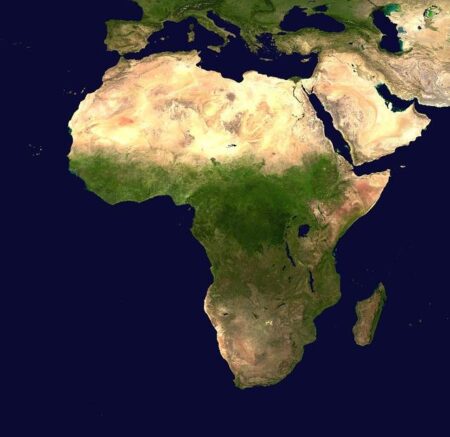Madagascar Endures Severe Losses and Displacement Following Cyclone Elvis
Madagascar has been struck hard by Cyclone Elvis, which has tragically resulted in the deaths of at least five people and forced thousands to flee their homes. Rescue teams are actively navigating through debris to locate survivors and deliver critical aid. The cyclone’s fierce winds and relentless rainfall have particularly devastated coastal communities, leaving vital infrastructure in ruins. Many displaced families now find themselves residing in temporary shelters without access to essential resources such as clean water, food, or medical care.
As the island nation struggles with these immediate consequences, meteorologists warn of another powerful storm forming over the Indian Ocean that could further hinder recovery efforts. In response, local authorities are intensifying preparations for potential flooding and landslides by distributing emergency supplies including food rations and healthcare provisions to the most affected areas. The fortitude of Madagascar’s population will be severely challenged as they face this looming threat amid ongoing relief operations.
Accelerated Humanitarian Response Amidst Emerging Storm Risks
In the wake of Cyclone Elvis’ destruction, emergency responders are working tirelessly to address urgent needs across Madagascar’s hardest-hit regions. With lives lost and communities shattered, coordinated efforts between government agencies and humanitarian organizations have ramped up significantly. Key components of this intensified response include:
- Distribution of Essential Supplies: Delivering food aid, potable water, medicines, and hygiene kits to vulnerable populations.
- Search-and-Rescue Missions: Teams continue combing through affected zones for missing persons while establishing safe shelters for those displaced.
- Mental Health Support: Providing counseling services aimed at helping survivors cope with trauma caused by loss of family members and livelihoods.
The urgency escalates as forecasts predict worsening weather conditions from an approaching cyclone system. Residents are being urged to prepare evacuation plans promptly while authorities focus on shoring up critical infrastructure under strain from recent damage. Priority actions underway include:
| Action Focus | Intended Impact |
|---|---|
| Reinforcing Emergency Shelters | Create safer environments for displaced individuals during subsequent storms |
| Restoring Communication Networks | Sustain effective coordination among relief teams across remote areas |
| Provisioning Emergency Kits | Ensure rapid assistance reaches high-risk groups immediately after impact |
Building Long-Term Resilience: Sustainable Climate Adaptation Strategies for Vulnerable Regions
The devastation wrought by Cyclone Elvis underscores an urgent need for comprehensive climate resilience strategies tailored specifically for regions like Madagascar that face recurrent extreme weather events intensified by global climate change trends. Recent data shows a 30% increase in tropical cyclone frequency over the past decade affecting Indian Ocean nations—a trend expected to continue unless adaptive measures are implemented swiftly.
A multi-faceted approach is essential involving both infrastructural upgrades and community empowerment initiatives such as:
- Robust Infrastructure Development: Upgrading roads, bridges, housing structures designed explicitly to endure severe storms reduces vulnerability significantly.
- Advanced Early Warning Systems: Leveraging satellite technology combined with local monitoring networks ensures timely alerts that save lives.
- Natural Barrier Restoration: Rehabilitating coastal mangroves forests acts as a buffer against storm surges while supporting biodiversity conservation efforts.
- Inclusive Community Participation:Â Â
Cultivating active involvement from local residents in disaster preparedness planning enhances effectiveness through culturally appropriate solutions tailored toward specific community needs.
Additionally,sustainable agricultural practices must be prioritized post-disaster recovery phases;a shift towards drought-resistant crops coupled with soil conservation techniques can safeguard food security amid climatic uncertainties.
Collaborative programs exemplify this approach effectively—examples include resource pooling among neighboring villages facilitating shared access to farming equipment during crises alongside educational workshops teaching adaptive farming methods proven successful elsewhere in East Africa.
| Initiative Type  | Description |
|---|---|
| Cohesive Resource Sharing Programs |
Pooled assets enable faster recovery times following disasters through collective action. |







